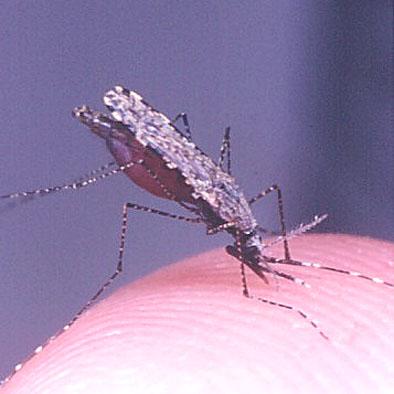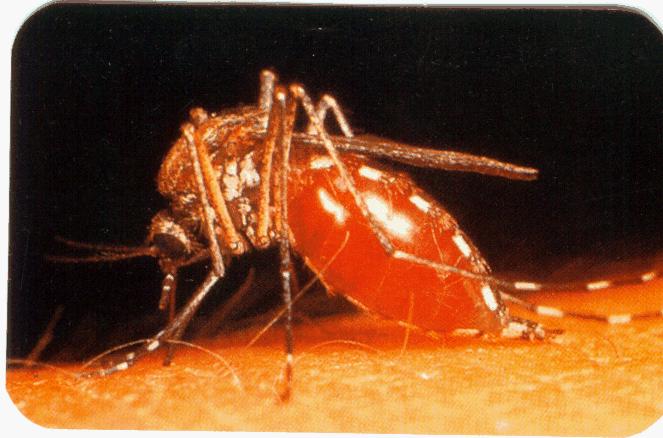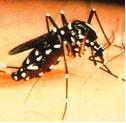Envis Centre, Ministry of Environment & Forest, Govt. of India
Printed Date: Thursday, September 18, 2025
Morphology
Morphology: Mosquitoes have a slender, delicate and long legged body measuring 3-4mm in length. The body is divisible into 3 parts: head, thorax and abdomen. The head is globular and highly mobile on slender neck. It bears a pair of compound eyes, antennae and mouthparts. The mouthparts are ofpiercing and sucking type. There is a pair of mandibles, a pair of maxillae, labium, labrum and epipharynx and hypophaynx. The thorax is made up of 3 segments; each segment bears a pair of legs. The legs are long, slender and delicate. The mosquito has a single pair of wings attached to the mesothorax. The complete fringe of large scales around the wing margin and along each of the veins gives the wing a peculiarly characteristic appearance. The mesothorax bears a pair of small drumstick- shaped processes, called the halters or balancers. The abdomen is slender and made up of 10 segments.
Life Cycle of Mosquitoes: (image)
Eggs are laid in water or in those places where water will collect later. The larvae are commonly known as "wrigglers". They have large heads and feed on microscopic organisms in the water. The abdomen is slender, and on the 8th, or next to the last abdominal segment, is located a respiratory tube which is known as siphon. The larva thrust this tube above the water at intervals to breath. Oxygen is also supplied in part by 4 tracheal gills located on the last segment of the abdomen. The larvae pass through 4 instars or growing stages. Then, they change into pupa which are commonly known as "tumblers", and unlike most insect pupae, are quite active. Respiration in the pupal stage is through 2 trumpet like tubes located on the thorax. Following a pupal period of short duration, usually 2 or 3 days, the insects skin splits down the back, the adult emerges and after a moment flies away. Most mosquitoes have a number of generations each year.
Anopheles:
Anopheles mosquitoes are recognized by their spotted wings, maxillary palpi as long as the proboscis, crescent-shaped scutellum, and characteristic resting position. Eggs of anophelines are laid singly upon the surface of the fresh water overhead tanks, domestic wells, etc. The adults of the most common species are weak fliers. The length of a life cycle is dependent on temperature, and may vary from 8days to several weeks in duration.

Culex:
Culex quinquefasciatus (fatigans) is probably the most abundant house mosquito in towns and cities of the tropical countries. Culex mosquitoes develop in standing water, such as polluted ponds, marshes, tanks, street gutters and water barrels. Eggs are laid in rafts; these masses may contain hundred or eggs each. Rapid urbanization and industrialization with out adequate drainage facilities are responsible for its increased spread. The life cycle from egg to adult may be completed in 10-14days, but it is prolonged by cool weather.

Aedes:
Adults are characterized by the presence of white rings on the tarsi and white spots on the abdomen and thorax. This mosquito is domestic in its habits and is found breeding almost entirely in the vicinity of dwellings, some times even breeding with in homes. Eggs are deposited on the surface of water or slightly above the water line on the sides of various receptacles where it is possible for them to survive desiccation for several months. Clean water is preferred to egg deposition to water polluted with sewage. Breeding may occur in vases, tin cans, old automobile tyres, flowerpots and almost any other type of container. The females bite chiefly during the day and are troublesome during the summer months through out the tropics. Although adults may &live for several months, they are quite susceptible to cold and succumb to temperatures below 400F. The length of immature stages may be as short as 10days under optimum conditions. If the temperature and food supplies are not favorable, a much longer period of time is required for its completion. All are strong fliers and may migrate many miles from their breeding places
